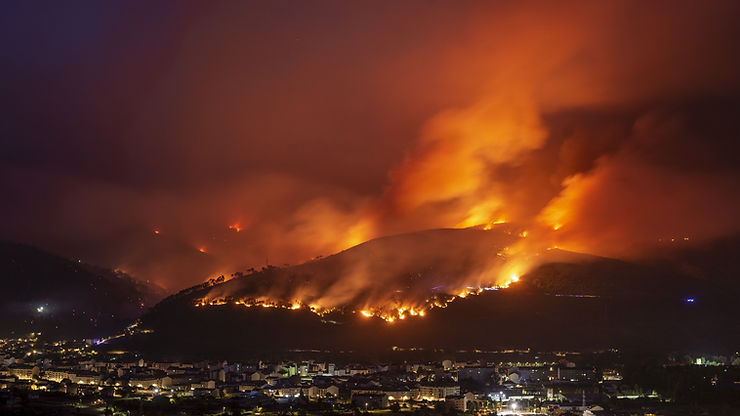By: Eric Wang
France. Spain. Italy. The UK. Poland. What do all of these countries have in common? They all experienced a blistering heat wave this summer.
Scientists say these heat waves are part of a new trend: heat waves in Europe are increasing in frequency and intensity at a faster rate than anywhere else in the world.
While global warming does play a part, temperatures averaging roughly 2 degrees Fahrenheit higher than before the Industrial Revolution, the main reason lies in other factors such as the circulation of the atmosphere and the ocean.
Scorching temperatures in England were caused partly by a region of low-pressure air that stalled in Portugal. This phenomenon was known as a “cutoff low” to atmospheric scientists, since it was cut off from the mid-latitude jet stream of westerly winds. Low-pressure zones tend to draw the air towards them. This particular cutoff low was sucking hot air from North Africa and shooting it out at the UK. “It’s pumping hot air northward,” said Kai Kornhuber, a researcher at Columbia University’s Lamont-Doherty Earth Observatory.
A study published this month found that most of the heat waves in Europe occurred when the jet stream was split in two, leaving in the middle an area of weak winds and high-pressure air. Efi Rousi, lead author of the study and senior scientist at the Potsdam Institute for Climate Research says a heat wave in Germany appears to be the product of a “double jet.” She also theorizes whether this had to do with the creation of the cutoff low.
Looking at the international map of air pressure, we see that many of the areas reporting heat waves are either close to an area of high-pressure air or in the middle of two strong jet streams.
Dr. Kornhuber also says warming in the Arctic could have contributed. The more the Arctic warms up, the smaller the temperature difference between it and the equator is. This leads to fewer summertime winds, making weather systems stay in one place for longer. “We do see an increase in persistence,” he said.
Turning our eyes to the oceans, studies also suggest the weakening of the AMOC or the Atlantic Meridian Overturning Circulation, could affect atmospheric conditions that would heat Europe further.
It doesn’t help that the melting of Greenland and the Arctic is helping to weaken the AMOC. The freshwater melted from Greenland inhibits the northern path of the AMOC and its the “overturning” aspect. In a quirk of history, global warming has cooled down the North Atlantic.
Repeated heat waves also make later ones more intense. When the sun shines on soil, some of the moisture in the soil evaporates, giving off a cooling effect that helps to mollify the high temperatures. But when a previous heat wave has already depleted the soil of moisture, a new heat wave would only be exacerbated by the sun baking the surface.
Though there are many other factors to Europe becoming the new heat wave hot spot, most of this stems from global warming and changes to the environment. As Dr. Wallace Broecker famously warned, “The climate system is an angry beast and we are poking it with sticks.”
Original Article: https://s3.amazonaws.com/appforest_uf/f1658688777542x224549752057991330/What%E2%80%99s%20Behind%20Europe%E2%80%99s%20Heat%20Waves_%20-%20The%20New%20York%20Times.pdf
Supporting Articles:
https://www.nytimes.com/interactive/2021/03/02/climate/atlantic-ocean-climate-change.html
https://zoom.earth/maps/pressure/#view=41.6,-5.6,4z/overlays=heat,fires,wind











